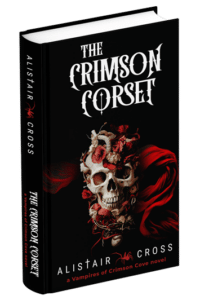Sex and Vampires
Home > The Hallway > Sex and Vampires
Vampires have existed in our imaginations for hundreds of years, and whether they’re the hideous fanged walking corpses with ruddy complexions of early European beginnings, or the glamorous, hypnotically-beautiful creatures of current times, they fascinate us. The vampire trend has its peaks and valleys, but it never drops off the map; we’re drawn to the lore and the magic, the glamour and the gore of these mythical seducers … and I believe a lot of the vampire appeal comes from the sexual texture of their deeds.
Considering their nature, it’s hard to imagine these brutal beasties have earned their places in eroticism and romance at all, but this seems to be where they’ve found their home. It was likely John Polidori’s The Vampyre in 1819 that paved the way for sex appeal in vampirism. His vampire was fangless, young, and sexually attractive.
Then, in 1871, Sheridan Le Fanu wrote Carmilla, who had an “unearthly pale beauty” and was overtly sexual with a penchant for the ladies, seducing them with her bite. These works of fiction established the sexual standard for the vampires of today and are certainly major precursors to Barnabas Collins, Lestat, and other undead sex-symbols of their kind.
At this point, it’s almost impossible to imagine an asexual vampire. They’ve become images of the forbidden – of eroticism and temptation – and this is how we like them. Plus, they get to be monsters, as well. We can only assume that the darkness and danger of the vampire is part of its sexual appeal.

When I began writing The Crimson Corset, I found myself torn between two opposing concepts. One was the idea that vampires are glamorous, sexual, seductive … and not entirely unlike the human beings they once were. The other idea was that vampires are bloodthirsty killers, parasites who guzzle down human blood in order to survive.
Struggling to establish the exact nature of my beasts, I ended up creating two sets of vampires that sat on opposite ends of the same spectrum: Those who have faith in humanity and believe it’s possible to coexist peaceably with their human counterparts, and those who believe themselves to be the dominant race, and are determined to rule humanity.
I added a human protagonist, a young man named Cadence Colter with a genetic rarity that would bridge the gap between the human and vampiric. And then I sent the vampires off to war, interested to see how each faction might respond to such a priceless treasure as Cade. Initially, I didn’t think about the sexual elements of this story at all, but it quickly became clear to me that vampires without sexuality wouldn’t work.
The vampires of The Crimson Corset – the villains, at least – use sexuality as part of their mind games and manipulations. Sex is an easy means of achieving their desired ends. It simply made sense to me that they’d use this ploy, probably because we, as humans, often make use our own sexuality. Whether we choose to give it much thought or not, sexuality is a powerful, creative energy, capable of as much creation as destruction. And no one knows how to utilize the power of sex like vampires do.
The very concept of vampirism bridges the gap between life and death, and at the core of life – of creation – is sex. For this reason, I quickly realized that sex not only had a place in The Crimson Corset, but was in fact, central to the story.
And I prefer my vampires with a little erotic appeal. Vampires are intriguing creatures that allow us to indulge so many forbidden fascinations, and why wouldn’t they? The concept of vampirism bridges the gaps between life and death, creation and destruction, power and corruption, sexuality and innocence.
I believe the vampire genre will go on, ever-evolving, and I’m excited to see the ways it might change. But I’d be willing to bet they won’t stop being so damned sexy any time soon.
